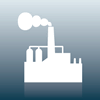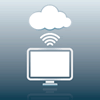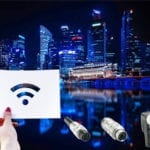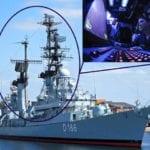Smart LEDs Extend Into the IoT
Embraced by consumers, businesses, and governments, LED lighting is the clear winner in the battle of the bulbs and is now being integrated into an array of IoT technologies. This opens opportunities for the interconnects they rely on.

It’s safe to say that LEDs have won the battle of the bulbs. In the last three years, lingering concerns about color, cost, lumens, and bulb design have been settled by innovations that make this lighting option look as good as it performs. While incandescents enjoy occasional use in décor as a nostalgic choice, LEDs are so vastly superior in energy efficiency that, now that prices have dropped to near-parity levels, consumers, businesses, and governments are opting to save money and energy and enjoy the new capabilities of these smart modern bulbs.
“Just walking through LIGHTFAIR this year was telling,” said Ron Weber, industry manager for lighting at TE Connectivity. “Ten years ago, LEDs were a novelty and walking through the show, there were still many incandescent and fluorescent fixtures on display. Fast forward to the latest LIGHTFAIR, and LED fixtures were omnipresent, in contrast to incandescent products, which were predominately novelties.”
Europe began the phase-out of inefficient light bulbs in 2009, beginning with incandescents and continuing on to target halogens and other lamps that exceed LEDs’ low level of energy use. The directive is estimated to save Europe the equivalent of the annual output of 10 power plants, reduce CO2 emissions by 15 million tons, and save 10 billion euros a year.
On January 1, 2018, California phased out the sale of light bulbs that use more than 72 watts of energy, leaving only a selection of LEDs, halogens, and CFLs on the shelves. The measure will enable Californians to save an estimated $1 billion a year in energy costs. California is leading the pack: The rest of the US will follow suit in 2020, in compliance with a national energy law signed by President George W. Bush in 2007.
In May 2018, the United Nations Environment Programme, along with Phillips Lighting and the National Resources Defense Fund, announced a global initiative to help developing nations make the transition to LEDs, which is estimated to save $18 billion in energy costs and 160 million tons of carbon emissions.
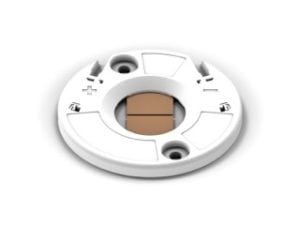
TE Connectivity’s innovative LUMAWISE Drive LED holder integrates the holder and DC/DC driver into a single package.
In other words, the incandescent bulb has gone the way of the candle and carriage. LEDs, on the other hand, are more than just a modern light bulb. The enhanced electronics in these devices — including plenty of opportunities for interconnects — make them a key part of IoT designs for homes, autos, commercial buildings, and public infrastructure. Connectors are embedded inside of the bulbs, as well as at key points throughout the systems they illuminate. At the 2018 LIGHTFAIR expo, many new products and discussions centered on control systems that connect lighting to the Internet of Things.
Micromanaging Light Sources
“End users are requiring increased control of their lighting, which is enabled by the increased controllability of LED systems,” said Weber. “At a minimum, they require dimming of fixtures using 0-10V or DALI, which is why we offered our LUMAWISE Drive COB holder in both dimming versions.
“This increasing controllability is driving more connectivity within and to the light fixture. This is primarily due to integrating sensors in or near the fixtures. Lighting is deployed where there are people present and as such, the lighting fixture can be an ideal platform for additional sensing. These sensors, often small, require small form factor multiposition connectors not normally seen in fixtures so there is cross-pollination with some of our consumer-device-focused interconnects. Further, they require some sort of I/O communication and may require the fixture to incorporate a multiposition connectors for wired communication if they do not wirelessly communicate.”
Another development: Bluetooth LED bulbs, which harness intelligent lighting control systems to manage light on a nuanced and customizable level. These bulbs work with sensors to enable advanced functions such as response to movement, color adjustments, and coordination with natural light. Programmed building management systems can remotely control this lighting or individuals can do so via smartphone apps. Sensor-rich light bulbs can respond to Google Assistant or Alexa commands. They can work in conjunction with security systems in IoT-enabled buildings, and can also provide property managers with detailed information about energy usage.
The ability to more precisely control the quality, intensity, and behavior of lighting in the LED era opens up new technological — and philosophical — avenues. Technology has created a better light and the next step is to fine-tune its impacts.
“Photobiology will become more important as we continue to understand more about how light affects humans and other living organisms,” said Weber. “It’s exciting to see the work done on how light impacts hospitals and eldercare facilities and, in particular, the comfort and security of patients in dementia care facilities.”
In addition to TE Connectivity, companies like Bel Fuse, Hirose, Phoenix Contact, Fischer, Belden, Amphenol, and ERNI are designing products that complement LED applications. Interconnects employed in LED applications must be able to reliably handle the high heat generated by these lighting systems, as connector failures are one the most common reasons the otherwise long-lasting LEDs could go dim. They must also feature a fast, simple, and secure locking system, such as push-in spring technology, and must be made from durable materials to help ensure the long lifetimes these bulbs promise. Additionally, connectors employed in LEDs destined for use in automotive, outdoor, indoor agriculture, and other harsh-environment applications must be sealed to the appropriate IP level against moisture or debris.
Here are a few connectors that are currently lighting up the LED world.
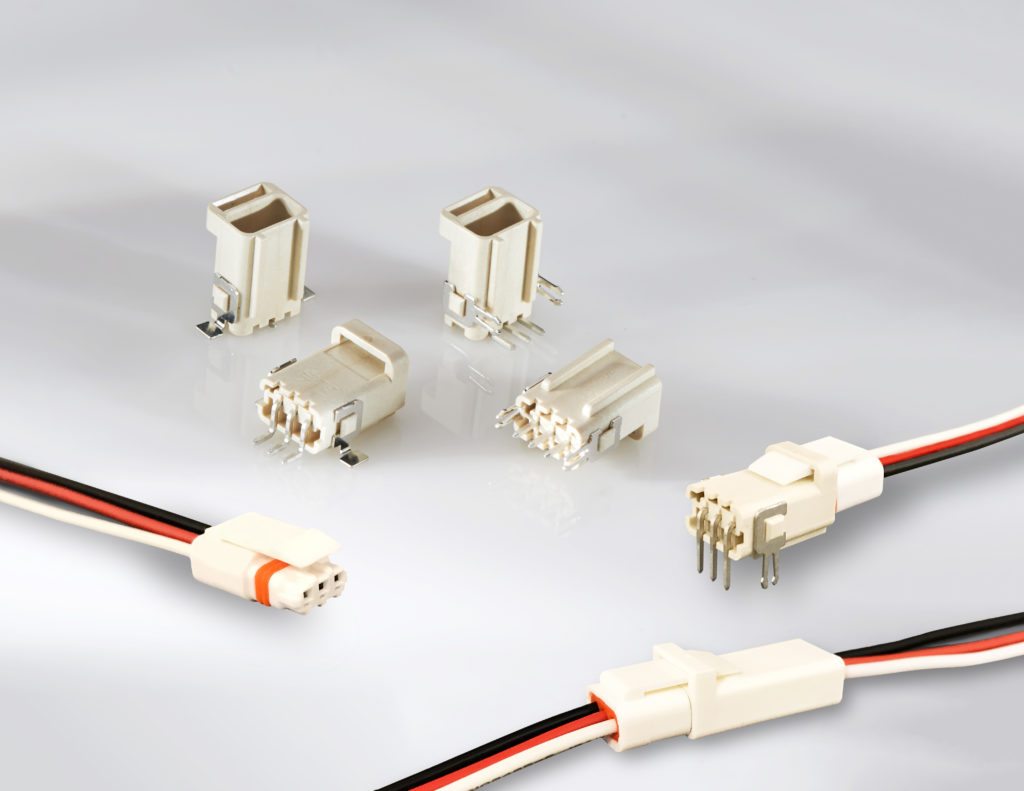
TE’s SlimSeal line of SSL connectors offer a versatile range of connections for indoor and outdoor LED applications. These low-profile, single-row connectors offer four position options to accommodate a variety of designs.
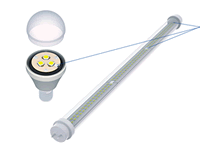
Hirose’s KN27 module connectors offer a solution with a dual-pin design that offers high reliability as well as easy insertion and assembly.
 LEDs in streetlights can save taxpayers significant amounts of money with long-lasting bulbs that draw less power. ERNI offers a reliable connection with its MiniBridge, MaxiBridge, and iBridge series, which handle high currents between PCBs and LEDs, displays and switches, and sensors.
LEDs in streetlights can save taxpayers significant amounts of money with long-lasting bulbs that draw less power. ERNI offers a reliable connection with its MiniBridge, MaxiBridge, and iBridge series, which handle high currents between PCBs and LEDs, displays and switches, and sensors.
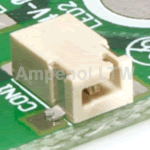 Amphenol’s LTW line of connectors is designed for every level of the LED market, from billboards to greenhouses and residential and urban lighting. Its SSL Solution connectors include snap-in locking, a variety of waterproof ratings, and include PCB connectors, DC connectors, and more.
Amphenol’s LTW line of connectors is designed for every level of the LED market, from billboards to greenhouses and residential and urban lighting. Its SSL Solution connectors include snap-in locking, a variety of waterproof ratings, and include PCB connectors, DC connectors, and more.
So is the LED fully evolved? Not at all.
“The ‘war of currents’ started by Edison and Tesla in the 1880s continues. AC versus DC lighting continues to be a topic of discussion and one that is coming more to the forefront with the current DC-based LED lighting sources and as we transition to DC-based alternate energy sources,” said Weber. “The core technology around LEDs will continue to evolve, albeit not at the rate we’ve seen over the past 10 years. On the fixture side, contrary to the early days of the LED revolution where LEDs were shoe-horned onto fixtures designed for incandescent or fluorescent sources, we now see fixture designs that are optimized around the LED light sources and I expect that trend to continue. OLEDs offer great application potential and I think offer the greatest potential for technological innovations to get them to where conventional lighting-class LEDs are today.”
Interested in a specific market? Click a market below for current articles and news.
Automotive, Consumer, Industrial, Medical, Mil/Aero, Datacom/Telecom, and Transportation
- Meet the Connector: DIN Standard Connectors - April 16, 2024
- Software-Driven Radio Reinvigorates Old Technology - April 9, 2024
- What is a Busbar? - April 2, 2024


